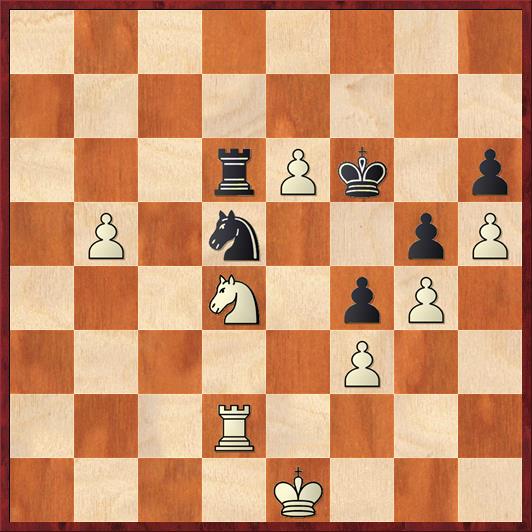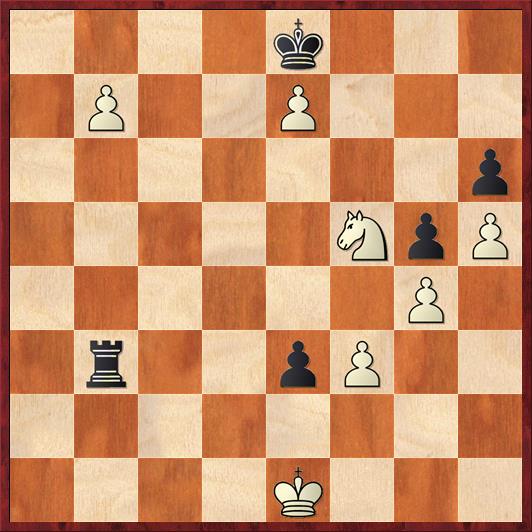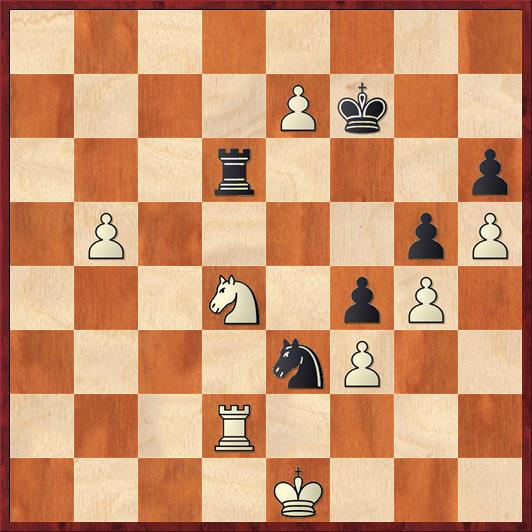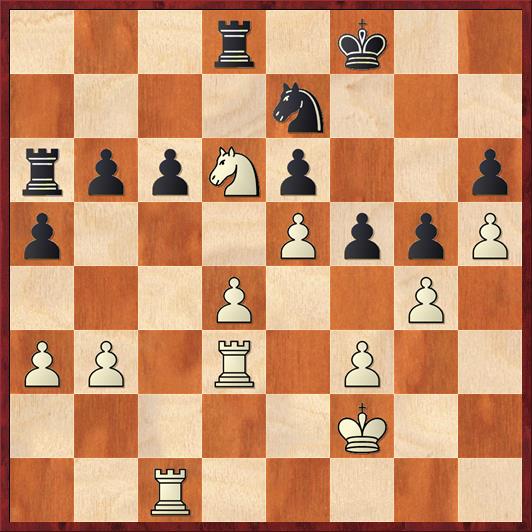One of my favorite events of the chess calendar is here, and in fact the first round nearly got by me before I realized it. Yes, it’s the month-long chess orgy known as the World Cup.
What I don’t like about the World Cup: It’s not a world championship, and should never have been marketed as such (in its early years).
What I love about the World Cup: It’s the only event, besides the Olympiads, where we get to see the very top players in the world, the “700-ers” (semisotniki) in Emil Sutovsky’s words, playing against somewhat lower-ranked masters, including players from countries like Egypt and Malaysia that don’t usually get this opportunity. It’s like the NCAA basketball tournament, my favorite sporting event of the year.
(700-er: a player with a rating in the 2700s. Or low 2800s, if you want to include Carlsen and Kramnik.)
The first round this time was somewhat short of upsets: only 8 out of 64 lower-rated players won their matches. But there was good action, and one of the upsets was sensational. Alex Lenderman, a 500-er (pyatisotnik) from the U.S., upset the number 25 seed Pavel Eljanov, a 700-er from the Ukraine, by the crushing score of 2-0. This was especially amazing because Eljanov was one of the sensations of the last World Cup, starting out with three 2-0 wins in a row and reaching either the quarterfinals or the semis, I don’t remember which. Not this time! And it was also a delicious upset because, you might remember, the Olympiad last year came down to the U.S. versus Ukraine. So it is very sweet to see our #9 player trouncing their #1 (yes, Eljanov is rated slightly higher than Ivanchuk).
By the way, Lenderman’s prospects for next round are rather bright, too, because he will be playing Norwegian Aryan Tari, another upset winner (over England’s David Howell). Lenderman-Tari will be the only “Cinderella versus Cinderella” matchup of the second round. Cinderella is guaranteed to win, but which one?
It was in general a pretty good round for the U.S. players. There was unfortunately one U.S. versus U.S. match (Onischuk defeated Zherebukh), so we had to lose at least one. The only other U.S. players to lose were Jeffery Xiong against Alexander Motylev (Russia) and Varuzhan Akobian against Canadian Anton Kovalyov. The other U.S. players who won were Wesley So, Fabiano Caruana, Hikaru Nakamura, and Sam Sevian. Sevian’s win over Liviu-Dieter Nisipeanu was also an upset according to the ratings. He’s got a pretty tough match ahead in round two, against #19 seed Li Chao of China.
Looking ahead to round two, the match I most want to see is #14 Wei Yi (China) against #51 Richard Rapport (Hungary), two talented juniors who are ready for a big breakthrough. Also I want to see #1 Carlsen versus #64 Dreev, which might not be as big a mismatch as it might seem. The most even match, in theory, is #32 Etienne Bacrot (France) against #33 Bu Xiangzhi (China). In practice, the most even match will probably be #15 Ian Nepomniachtchi (Russia) against #50 B. Adhiban (India) because neither one of them seems to be able to win until they get to the blitz games.
I’d like to show you a couple moments from Alex Lenderman’s epic upset over Pavel Eljanov. They are from the first game, in which Eljanov should have totally crushed Lenderman but somehow had a meltdown at the end.
FEN: 3r1k2/4n3/rppNp2p/p3PppP/3P2P1/PP1R1P2/5K2/2R5 w – – 0 38
Eljanov, as White, has a dominating position, with a beautiful knight on d6. How could he possibly lose?
Not here! In fact, he played a quintessential master move here, which is why I wanted to start with this position. He played 38. d5!, a prototypical sweeper-sealer if there ever was one. The idea of a sweeper-sealer is to close off one square to the opponent (d5, where Black would like to put his knight) and sweep open lines for yourself (in this case, the d-file). Black doesn’t want to take with the knight because 38. … Nxd4 39. Rxc6 gives White too much pressure on the targets b6 and e6. He doesn’t want to take with the e-pawn because 38. … ed 39. gf would be heinous. So he was stuck playing 38. … cd, after which 39. Rc7 activated White’s rook on the seventh rank. Actually, though, the computer points out that 39. Nb5 might have been better, keeping Black more bottled up. In the game, Lenderman gave back a pawn to activate his rook with 39. … b5!? 40. Nxb5 Rc6. However, Eljanov found the accurate response 41. Nd4! Rxc7 42. Nxe6+, a cute three-way fork winning another pawn.
Now let’s fast forward ten moves to where it all started going wrong for the Ukrainian.
 Position after 51. … Nd5. White to move.
Position after 51. … Nd5. White to move.
FEN: 8/8/3rPk1p/1P1n2pP/3N1pP1/5P2/3R4/4K3 w – – 0 52
Here I was expecting White to play 52. Kd1. Although the knight can harass the king and rook a little bit, White eventually gets his king to a2 (!) and from there he can march up the queenside unimpeded. Instead, for some reason, Eljanov played
52. Re2??
I just don’t know how to account for this. Black’s response is so obvious. White must have missed either Black’s 53rd or 54th move, but I don’t know which.
52. … Ne3!
All of a sudden the danger of losing has materialized out of thin air. If the knight leaves d4, then Black mates in two with 53. … Rd1+ and 54. … Rf1 mate. Lesson one: Do not create mating nets against yourself. In that respect, 52. Re2 was the worst possible move because it is the only move after which White might get mated.
Still, Eljanov must have seen this, and he played
53. e7! …
Of course, if Black takes, 53. … Kxe7??, then the fork 54. Nf5+ wins. But Black doesn’t have to take on e7. He simply plays
53. … Kf7!
Can it be that Eljanov simply missed this? In any case, the position is now critical for both sides. To avoid immediate defeat, White has to play 54. Rxe3! But this move actually comes very close to winning for him! After 54. Rxe3 fe 55. Nf5! I think that Black has only one way to draw: 55. … Rd3! 56. b6 Rb3 57. b7 Ke8! (diagram)
 Position after 57. … Ke8 (analysis). White to move.
Position after 57. … Ke8 (analysis). White to move.
FEN: 4k3/1P2P3/7p/5NpP/6P1/1r2pP2/8/4K3 w – – 0 58
This amazing position is very near to a mutual zugzwang. The only piece that either player can safely move is their king, and the kings cannot go far enough to do any damage. Thus, for instance, if 58. Kd1 Kd7 59. Kc2 Black plays 59. … e2!! Now 60. Kxb3? e1Q 61. b8Q Qb1+ loses for White, so he has to play 60. Kd2 Rb2+ 61. Ke1, and now both kings are completely tied down and it is a draw.
But instead of 54. Rxe3, Eljanov played his second horrific blunder:
54. Rd2?? …
Ironically, this move undoes his previous blunder — but it makes his position even worse! Do you see why? Actually, if this puzzle takes you more than 5 seconds, you need to practice your tactics.
 Position after 54. Rd2. Black to move.
Position after 54. Rd2. Black to move.
FEN: 8/4Pk2/3r3p/1P4pP/3N1pP1/4nP2/3R4/4K3 b – – 0 54
I won’t bother adding extra space, because I know you’ve already solved it already. Lenderman played
54. … Rxd4!
when, of course, 55. Rxd4 would be met by the fork 55. … Nc2+. Instead Eljanov staggered on three more moves with 55. Rb2 Rd7 56. b6 Rb7 57. Ke2 Nd5, and then White resigned.
Surely White’s flag must have been hanging, otherwise it’s hard to imagine the #25 player in the world falling into a two-mover like this. This unbelievable finish will make me feel better the next time I make a ridiculous blunder to throw away a won game. It can happen to anyone.
For Lenderman, of course, this was a huge stroke of good luck. But he deserves credit for putting up a good fight. And it certainly wasn’t luck that he won the second game of the match, too. In that game Eljanov was unrecognizable. In an equal position, he apparently felt too much pressure to win, and started sacrificing pawns with no compensation.
Okay, on to the second round! By the way, I hope it’s not too late to make a prediction for the winner of the tournament. I’m predicting a final match of #2 Wesley So versus #4 Vladimir Kramnik, and I predict that So will be the winner.




{ 4 comments… read them below or add one }
Dude. The name should totally be, “the 700 club.”
Another good example of why it’s all about tactics! (Well, not “all,” but you know what I mean.)
Eljanov said after losing game 2 to Lenderman that during the first game he was already chalking up the full point in his mind! He admitted he started wondering, “What should I play in my second game vs Lenderman?” After this stunning reversal, he just couldn’t pull it together, and as you wrote he was uselessly aggressive in trying to win with Black.
Note also that Onischuk advanced against Zherebukh when the latter had some visa problems, or thought that if he left the US he wouldn’t be able to return. I don’t know the whole story, but from what I gathered no games between them took place.
Certainly not 59…e2?? in the 54.Rxe3 variation given when 60.e8=Q+ Kxe8 61.Kxb3 e1=Q 62.b8=Q+ wins.
Oops! Good catch. I saw that in other lines (it’s why Black can never take on b7, even if he moves his king to d7, because of e8Q+ followed by a knight fork) but I forgot about it here.